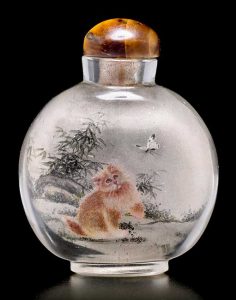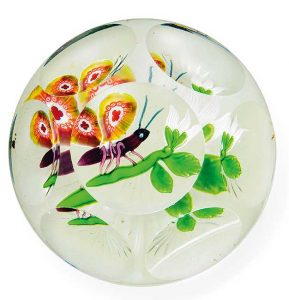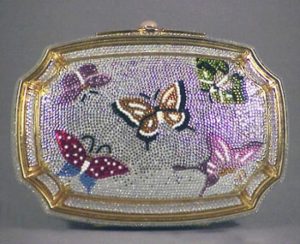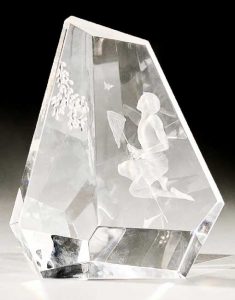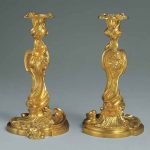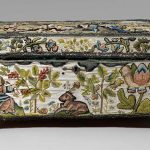Lead glass, commonly called crystal, is a variety of glass in which lead replaces the calcium content of a typical potash glass. Lead glass contains typically 18–40% (by weight) lead(II) oxide (PbO), while modern lead crystal, historically also known as flint glass due to the original silica source, contains a minimum of 24% PbO. Lead glass is desirable owing to its decorative properties.
Originally discovered by Englishman George Ravenscroft in 1674, the technique of adding lead oxide (in quantities of between 10 and 30%) improved the appearance of the glass and made it easier to melt using sea-coal as a furnace fuel. This technique also increased the “working period” making the glass easier to manipulate.
The term lead crystal is, by technicality, not an accurate term to describe lead glass, as being an amorphous solid, glass lacks a crystalline structure. The use of the term lead crystal remains popular for historical and commercial reasons. It is retained from the Venetian word cristallo to describe the rock crystal imitated by Murano glassmakers. This naming convention has been maintained to the present day to describe decorative hollow-ware.
Lead crystal glassware was formerly used to store and serve drinks, but due to the health risks of lead, this has become rare. One alternative material is crystal glass, in which barium oxide, zinc oxide, or potassium oxide are employed instead of lead oxide. Lead-free crystal has a similar refractive index to lead crystal, but it is lighter and it has less dispersive power. Reference: Wikipedia
AN INSIDE PAINTED CRYSTAL SNUFF BOTTLE School of Wang Xisan, 1973 Of flattened rounded form, supported on a flat oval foot, painted on one side with a kitten and a butterfly, the other side painted with a Pekinese and dated guichou hengyue (second month, 1973) with one painted seal with a contraction of the character Ji a reference to Hebei province and Wang Xisan’s Ji school. 2 1/8in (5.5cm) high
Sold for US$ 1,500 (£ 1,216) inc. premium at Bonham’s in 2018
A BACCARAT FACETED BUTTERFLY AND BLOSSOM WEIGHT MID-19TH CENTURY The clear glass set with a butterfly in profile, the insect composed of a translucent deep-purple body, amethyst legs, black head, turquoise and white eye and teal antennae, each upright multi-coloured mottled wing centering a large red and white millifiori quatrefoil cane, perched on a short green stem issuing two leaves and a budding white striated bellflower, cut with a top circular window and six side printies above a star-cut base 3 1/8 in. (7.9 cm.) diam.
Sold for GBP 16,250 at Christie’s in 2012
Judith Leiber Crystal Butterfly Clutch Excellent condition, unused.
Sold for $1,300 (includes buyer’s premium) at Doyle New York in 2000
Steuben glass “Boy and Butterfly” crystal sculpture, designed by George Thompson and engraving designed by Tom Vincent, signed on bottom: Steuben, edition 25 circa 1970, in fitted red leather case. ht. 8 1/4 in., wd. 7 in.
Sold for $6,000 at Nadeau’s Auction Gallery in 2019

